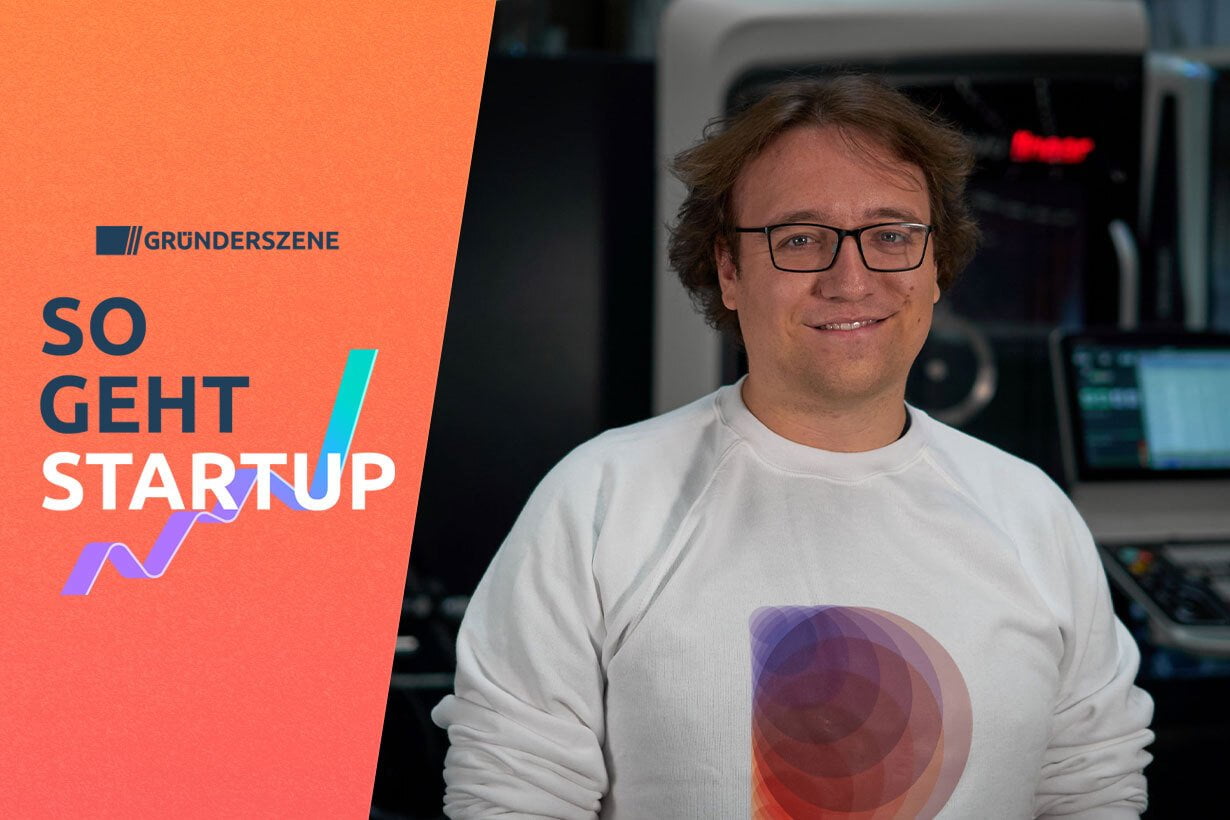
Jonas Schneider led a team at OpenAI back in 2016. The knowledge from his project was incorporated into the development of ChatGPT. Today he runs his own AI startup.
Without OpenAI, we would talk about AI very differently today. ChatGPT has shown millions of people that artificial intelligence has arrived in reality. For many, this realization may have come overnight, perhaps during the first chat with the smart machine. But not for Jonas Schneider: The German was one of the very early employees of OpenAI and led his own team there as early as 2016. However, it wasn't about language models, but robots.
Click here to see all podcast episodes.
Robotics at OpenAI? This might also surprise many people. The AI company supports a startup from Norway that presented the robot 1X a few days ago – a humanoid that can do a wide variety of everyday things with the help of AI. But the US company owes its reputation among the general public to the large language model GPT. And the OpenAI Robotics team that Schneider led until 2019 was disbanded in 2021. The reason given at the time by OpenAI co-founder and head of technology Ilya Sutkever: There was too little data from the real world to be able to train the machines.
In order to understand what robots and smart voice AI have to do with each other at OpenAI, you need to take a look at the beginnings of the AI pioneer. We asked Jonas Schneider about this in the “How Startup Works” podcast.
Read too
Ex-OpenAI employee: “We turned established knowledge on its head”
“At OpenAI we wanted to tackle the toughest problems in different areas and see where we could make a difference with machine learning or fresh approaches,” says Schneider. These domains include robotics, but also language, image recognition and creation: “We have taken the established knowledge and turned it on its head.”
Unlike Google with its AI company Deepmind, says Schneider, the focus has always been on practice. It wasn't about writing papers on scientific findings, but about building functioning systems. “You have to lock all the experts in a room and then let them do it,” says Schneider.
When solving problems in the different domains, it turned out that they all worked similarly. As with the analysis of language, robotics is also about compiling and managing data sets and using the right infrastructure to train the huge neural networks.
Read too
How a robotic hand helped create ChatGPT
Schneider himself worked with his robotics team to teach a robot hand to solve a Rubik's cube. Why just a hand and not a whole robot or not the big AI model? “We first looked at special cases and then tried to find a pattern from them.” These different small projects within OpenAI then led to the software infrastructure “which was later used to train the huge language models.” That means: without them Robot hand and other experiments in the early days of OpenAI, ChatGPT might not have existed.
At the end of 2019, Jonas Schneider left OpenAI, and shortly beforehand Microsoft announced its billion-dollar investment in the US startup. His departure happened to coincide with this period, says Schneider in the podcast.
Before Microsoft got involved, there were discussions in the company about the direction of OpenAI, which for a long time wanted to serve the common good as a non-profit. “There were different ideological camps,” says Schneider. The first camp would have advocated remaining a non-profit in order not to be influenced by corporate interests. Others would have said: “In order to fulfill the mission of the non-profit, we need a level of resources that cannot only be raised through donations,” said Schneider. “I can understand both sides. I am also convinced of the current course.”

German OpenAI employee founds his own startup: Daedalus
After leaving OpenAI, he went back to Germany and founded his own company in Karlsruhe: Daedalus. The long-term goal of the startup, which just raised 20 million euros, is autonomous factories for precision parts. The inspiration for this came during his time at OpenAI, when he and his team needed special components for the robots. However, they would regularly have had to wait several months for delivery because these parts have to be manufactured by hand by experts with decades of experience.
He now wants to change that. Daedaelus is currently in the process of digitizing the experts' experience in order to then accelerate the production process using artificial intelligence. “We’re going in there fearlessly and rethinking the entire industry a little bit. We question all processes, all wisdom that has been developed,” says Schneider.
However: Daedalus does not want to work against the experts, but with them. This can only work together with the experience of the software experts and industry experts – in order to create the factory of the future. You can find out what it should look like and what role Jonas Schneider's startup plays in the podcast.
Advertisement. This episode is presented by Gravis and topi. With the B2B subscription from Gravis and topi, companies can rent their Apple hardware on a monthly basis instead of buying it. Find out now at: https://grav.is/b2b-abo.
Source: https://www.businessinsider.de/gruenderszene/technologie/openai-deutscher-ex-mitarbeiter-sagt-wie-es-war-dort-zu-arbeiten/




